The Silver Bullet To Startup Marketing

Every day, I see entrepreneurs and startup marketers desperately seeking for a magic trick.
Some kind of secret tactic or hack that will have the money raining down on them in no-time. Like the cheat codes for your favourite video game.

You know, like all the other startups around them.
One little trick and BOOM 💥 — explosive growth as far as the human eye can see.
Why can’t we have that? 🙄
Growth hacks they call them. The internet’s version of black magic.
Chances are you’ve been on a quest to find the secret for a while now 😯.
Chances are you’re looking for such a secret at this very moment 😏.
Chances are you’ve already given up on ever finding the secret 😒.
Chances are you stopped believing the secret existed in the first place 🤔.
Chances are you’re reading this post because the title hints at the secret 😛.
 Am I trolling you? 🤡
Am I trolling you? 🤡
No. I’m a man of my word. I will show you the secret.
Because yes, the secret does exist.
But it’s not guarded by one of those growth hacking agencies that keeps on telling you that they’ll launch your startup into the stratosphere 🚀.
If only you would give them a shot.
👉 In exchange for about half your funding 💸 .
They’re not guarding anything. They just want you to believe that you know nothing and they know everything so you’ll give them their money.
In the land of the blind, one-eye is king, remember? This is called marketing.
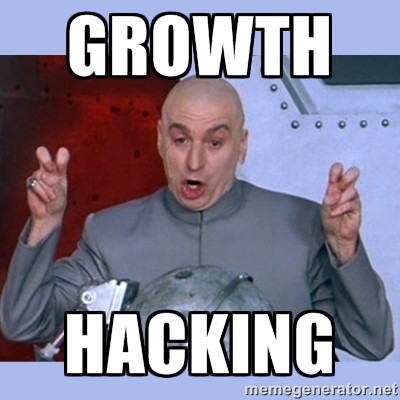
Don’t get me wrong.
Growth hacking is fun. It’s a great way to cut corners and get ahead of the competition 🏎️. You’ll win some ground and maybe, just maybe it’ll even get you some initial traction.
But it will only get you as far as your product-market fit allows you to.
True product-market fit is the one and only way to scale and growth hacking doesn’t hold the secret to getting you that.
The secret lies with you 🗝️.
As a startup, you’re in the business of solving real-world problems.
You have a unique take on your topic’s problems. You have a unique set of tactics, strategies and approaches to solve those problems.
You have unique value to give ✨. Product — and content-wise.
Somewhere out there is a group of people with the exact set of problems you are fit to solve. A group of people in need of your value. Your audience.
👉 You just need to find that group of people — or have ‘m find you — and give ‘m what they need.
That’s it. That’s your secret 🗝️.
🎈 Giving out your value to the people it’s of value to.
Here’s the thing startups don’t seem to get 👇.
People won’t buy your product because you’ve been working your ass off for four straight years, living off a waiter’s salary, sleeping on a stinking mattress in your friend’s garage.

People will buy your product because it makes their lives better.
Are you wondering why no one is reading your blog posts?
Why only your mom likes your Facebook updates?
Why you’re getting so much hate on your cold emails?
Why your website traffic isn’t going up?
Why none of your trial users starts paying?
Here’s why 👉 Nobody cares.
Putting your blood, sweat and tears in your product does not make them owe you anything. That goes for life in general btw.
So are you telling me I should go all-in on product and just forget about marketing? 🤔
No.
I’m telling you to find the people in need of the value you can give them.
I’m telling you to build a strategy around helping people.
I’m telling you to put marketing first because it will make both your product and your marketing better. And easier.
Better yet: I’m telling you to put customers first.
TL;DR
- growth hacking is fun
- but it won’t sustainably grow your startup
- only true product-market fit will
- the secret lies to growth lies with you
- give out value to people it’s of value to
- people buy your product because it makes their lives better
- build a strategy around helping people
- put marketing first
- better yet: put customers first
9 out of 10 startups fall flat on their faces 🤕
You don’t find customers for your products.
You find products for your customers.
Most startups are idea-driven. Someone has an epic idea and then the marketing guys have to find a way to get people to pay for it.
I get that 👍.
It’s way easier to build a product than to build an audience for it.
You have to talk to a lot less people. There’s nobody to tell you your epic idea is actually shit and your mom is proud of you because you’re chasing your dreams 💭.

But here’s the thing.
Entrepreneurship is not about you and it’s not about your ‘epic’ idea.
It’s about making people’s lives better. It’s about helping and giving value 💝.
You know what’s even more difficult than building an audience?
Building a product with and for an audience.
👉 A product people get value from. A product people care about 💕.
If people don’t care about your product, reality will catch up with you. Your world will come crashing down. All of your energy, time and money will have been for nothing.
And there’s nothing your mom can do about it 🤷.
Main cause of death?
Trying to build a product for a group of people that doesn’t exist.

TL;DR
- people first build products, then an audience
- but what if people then don’t care about your product?
- turn it around
- build an audience first, then the product for that audience
- or end up dead like 9 out of 10 startups do
Mediocre Viable Product 😕
In 2011 Eric Ries took the startup world by storm with The Lean Startup.
People hailed it as the Bible of Startups 🙏.
Rightly so. The idea of starting from something small and gradually building it on customer input is probably the quickest way for a startup to find product-market fit 🖇️ and a scalable business model 📈.
If you haven’t read the Lean Startup (you should), here’s the gist of it:
- Build a Minimum Viable Product (MVP) 🎁
- Find out if people will pay money for it 💁
- Use feedback from those people to adapt the MVP up until the point a sustainable group of people will buy it 💰
An MVP is a product that has the minimum set of features to prove the hypothesis that is essential to your idea’s potential to exist.
(Just so we’re straight on that.)
Now.
Remember the Product Adoption Curve? 😏
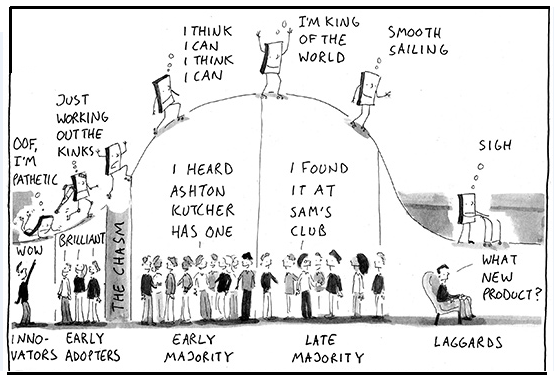
It’s one of those gazillion frameworks they show you in marketing class you instantly forget about. I did anyway 🤷.
The Product Adoption Curve is something all new kids on the block have to go through. Facebook, Slack, Uber and DVDs (still ring a bell? 🔔) — heck, even underwear at some point must have gone through it (hope those do ring a bell…).
Your MVP is meant to win over the innovators and, while you’re at it, the early adopters. The more the merrier, right? 🙌
Innovators and early adopters are the guys that’ll take your product for a spin when it’s still in diapers 👶.
They‘re okay with it still shitting the bed from time to time 💩. They look beyond the bugs and spartan features to see if your product deserves to exist.
They’ll share their findings with the world and, if they like what they see, may end up evangelising your product 😇.
But what if your MVP sucks? 🙃
What if your MVP is so bad the innovators you’re trying to seduce don’t even give it the light of day?
Sure, it’s the bare minimum of your product, but you should still get some traction out of it, right? 🤔
It only takes one to start a fire 🔥 but it takes many to keep the fire burning.
MVPs are meant to spark the startup fire but often end up killing it 💦.
In the early days your startup needs a bunch of passionate, almost religious fans 🙏. People that really dig what you’re doing and are in it for the long haul.
You need these fans to help you cross the chasm, the big wide gap sitting between you and the masses that will scale you up to be a real company.
🙃 Without fans you’ll be stuck at the start and fall into the chasm.
And once you’re in that shithole… Well, good luck getting out again 😐.
So, did Eric Ries get it wrong? 🤔
Not really. The idea of creating a first slim version of your product and then building it up together with your customers is something I still strongly believe in. Not just in the early days and not just for startups.
Entrepreneurs just seem to think the minimal in MVP gives them a hall pas to create whatever flaky fantasy they have in their heads and get away with it. No matter how crappy it is 💩.
Is arrogance to blame here or is it because a famous entrepreneur once said:
It’s not the consumers’ job to know what they want.
💬 Steve Jobs
Behold one of the most misinterpreted pieces of text of all time.
Not as bad as some people getting “kill all the people” from love-preaching religious books, but close.
Most entrepreneurs seem to think this means that they get to decide which products customers should use.
What Steve really meant is that, as an entrepreneur, it’s your job to know which products customers will want to use without them telling you.
Yeah I know. Steve got us good there 🙄.

Knowing what customers will want to use, takes:
- intelligence 💡
- empathy 👂
💭 Are 9 out of 10 entrepreneurs dumb or are they just not listening?
Too many startups fail to entice the early adopters they so badly need. They hustle hard to be remarkable but end up standing out for mediocrity.
⚠️ You don’t get away with mediocrity.
Your customers deserve better. The world deserves better.
TL;DR
- the lean approach is the best way to find product-market fit
- and a scalable business model
- your MVP is meant to win over early adopters and cross the chasm
- but MVPs often turn out mediocre
- because entrepreneurs don’t listen to what the market is telling them
- and then fail to cross the chasm
Customer validation kinda sucks 🤔
The lean approach was brought into the world so startups could nail product-market fit asap. And yet the lion’s share is still fucking it up.
What’s missing here? 🤔
Entrepreneurs are doing a crappy job figuring out what the customer wants.
Now, what is the one thing that will help you understand a market better?
🥁…🥁…🥁
Market research 🤓.
Probably not the fireworks you were expecting.
I am talking about 2017 market research though.
Not surveys. Stay away from surveys 👎.
Didn’t we just agree that Steve wants you to figure out what your customers want without them telling you?
Let me break down real quick why surveys suck for customer validation 🙅:
- 💣 Surveys are faceless. Customer development is about understanding people’s pains and needs. There’s no way they can tell you about those by ticking off some checkboxes.
- 💣 Surveys only tackle what’s already on your mind. You think your idea is epic and you’ll design your survey to see that confirmed. These presumptions will make you miss out on a lot of insights customers can give you. And are you so sure you know the right questions to ask?

- 💣 Surveys lack context. Do you know who you’re talking to? Segmentation is critical. How do you know if it’s good or bad that 20% confirmed your idea if you have no tangible idea of who they are and what makes them tick?
- 💣 Surveys don’t allow for proper follow-up. The whole idea of customer development in the lean approach revolves around finding paying customers for your MVP. Surveys don’t give you the opportunity to build relationships with potential customers.
Individuals are honest only to the extent that suits them, including their desire to please others.
💬 Dan Ariely in ‘Predictably Irrational’
- 💣 Surveys don’t predict future buying behaviour. Surveys measure rational motives, but human decision-making is determined by a lot of factors, a lot of which are not conscious or rational. People think they act out of ratio, while in fact they often just rationalise actions they did for reasons they can’t articulate. So even if people say they will buy your product on your survey, doesn’t mean they actually will. If you’d like to dive deeper into this, check out Thinking Fast & Slow by Daniel Kahneman and Predictably Irrational by Dan Ariely.
In fact, customer validation in the Lean Startup seems to be quite of an abstract concept.
Joel Gascoigne from social media management tool Buffer validated his idea by “simply tweeting the link and asking people what they thought of the idea.”
He then goes on saying 💬:
I got some useful feedback via email and Twitter, I considered it “validated”. In the words of Eric Ries, I had my first “validated learning” about customers.
Really? 🙄
Some buddies of yours cheer you on and — hallelujah — the idea is validated?
Of course, Buffer turned out to be a great product a lot of people are willing to pay for, but you can hardly call that a validation technique.
The Lean Startup dictates you should validate your idea as quickly as possible and then build from there. But what is validation, really? 🤷
People saying something is a good idea doesn’t mean it is and it sure as hell doesn’t mean they’ll buy it.
But if you’re all psyched about your amazing idea, you’ll settle for that and start building. Of course you will 😉.
And that’s how you get Mediocre Viable Products that don’t take off.
👉 Startup suicide.

Or how about this 👇.
Dropbox got 75k email opt-ins in a day from a video they posted on HackerNews.
That is as sweet as honey 🍯.
But does it mean your idea sucks if you don’t get that? 😐
Not every idea is going to go viral. There’s also a big difference between someone giving you their email address and someone giving you money.
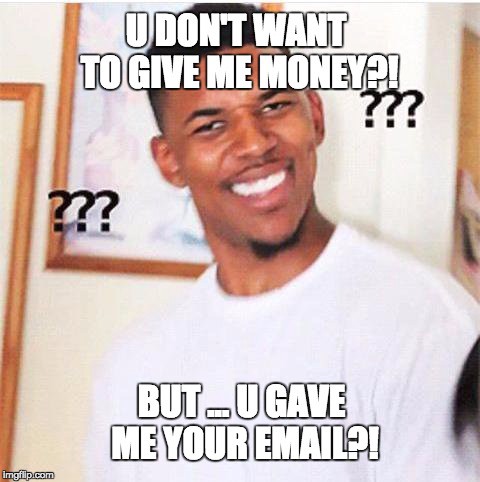
The point is this:
Customer validation as prescribed in the Lean Startup is sketchy to say the least. Poor validation leads to flawed MVPs which then fail to get traction.
Who knows how many great products have never seen the light of day because of a crappy minimal viable version built on crappy customer validation? Or the other way around?
You’re just not listening. You’re drunk in love with your baby-girl/boy idea and are looking everywhere for signs you should pursue it.
You’re just seeing whatever you want to see 😍.
These are cases of cognitive bias, more specifically confirmation bias and overconfidence fallacy.
It’s okay that you have that. Everyone does. It’s how your brain works and inherently human. The only way to cope with these blindspots, is to acknowledge you have ‘m and work your way around.
Oh, and if you’re one of those “yeah, yeah but I’m different” — kind of people, you’ve already lost.

TL;DR
- entrepreneurs suck at figuring out what the customer wants
- they’re missing market insights
- customer validation as prescribed by the lean approach is crappy
- surveys suck
- every idea goes viral
- email opt-ins don’t equal money
- poor validation leads to flawed MVPs which then fail to get traction
- they’re prone to cognitive bias, clouding your vision
Minimum Viable Audience 👨👩👧👦
There’s a better way ☝️.
Instead of building a product for a potential audience, start building an audience for a potential product.
Today’s Internet is the entrepreneurial gift from heaven for its ability to give you live insights in what the world in all its complexity is thinking and feeling at any time.
People will come right out and tell you all about their problems, desires and needs without you asking. As long as you take the time to look 👀.
Real-time market research 🕵️. Eat that, surveys.
Use social media and internet communities to listen before you start talking. Learn about the people you target so you can build something they actually want and are willing to open their wallets for.

Find your audience — the people you can and want to help — and connect with them.
Be a fly on the wall, keep your eyes and ears open. Then go in and engage.
Ask about their pains, learn about the problems they care about and find out what it is they need.
You’ll find this knowledge to be incredibly powerful.
Not only are these people discussing the exact problems you’re looking to leave your mark on, they’re also using the language typical for your niche.
Every conversation will make you more of an expert and increase your ability to create unique value 👨🔬.
Once you’ve immersed yourself in the tribe, its time to start building your influence by giving to the community.
Your game is to give value. Not yet in the form of a product, but in the form of content that:
- helps 🤝
- inspires 💡
- delights 😊
- entertains 🤹.
Without expecting anything in return.
One of the key things we’re learning is that you need to build an audience before you build your product. Build your audience not for marketing, but for learning.
Founder QuickSprout and CrazyEgg
You’ll be learning directly from a real group of people as they react to relevant triggers — your content — instead of trying to garner a strained idea from generic market research based upon vague lean startup validation techniques.
These are real people who’ll pay attention to you, with real pains 🤕 you can solve and real goals 🥅 you can help them achieve 🏆.
The cues you’ll get from your audience bouncing back off your content will give you the ingredients to cook up a minimum viable product that is Exceptional (EVP) rather than Mediocre (MVP) and gets the early adopters all lyrical, ready to bring you across the chasm 😏.
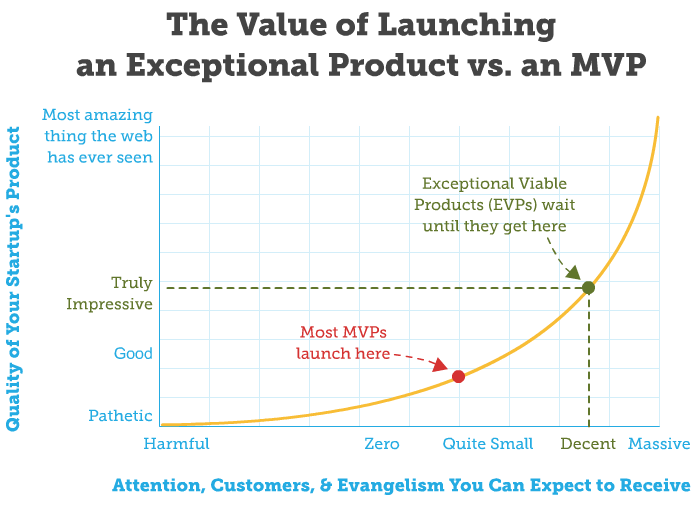
Even if your EVP doesn’t get the traction you hoped for, you’ll still have a loyal audience coming back because you’re feeding them value and helping them advancing in whatever it is they care about.
You can show them wireframes, slide decks, landing pages, mockups or other low-risk product samples and see how they react.
If you can pull off building yourself an engaged audience, you’ll have a focus group that will do the heavy marketing lifting for you 💪.

Most people start off with something they want to sell and then have to figure out how to sell it and who to sell it to.
With an audience, you’ll have your customers sitting in your backyard, waiting for your next big thing.
They’ll be your compass, able to get you back on track as soon as you go off the rails. If they’re suddenly responding less, it could mean you’ve lost touch and need to re-adjust your focus.

The beauty is that maintaining an audience requires minimal effort because it’s just about being human. You’re talking and listening. You’re connecting with other human beings, which is what both life and business are ultimately all about.
TL;DR
- instead of building a product for a potential audience
- build an audience for a potential product.
- social media and internet tribes allow for real-time market research
- find the people you can and want to help
- your audience will tell you want they want to pay for
- build an EVP (Exceptional Viable Product) instead of an MVP
- maintaining an audience is easy
- it’s talking, listening — and just being human
Why giving is your superpower 💫
You do have a magical superpower 👉 Generosity.
It also goes by the name of altruism. Or selflessness 💁.
🎁 Giving value away for free.
Sounds a tad contradictory to the transactional nature of business? 🤔
Never in the history of the world has there been someone who has given away too much. It’s one of the things that sets apart leaders from followers.
Most people just laugh when they hear that the secret to success is giving . . . Then again, most people are nowhere near as successful as they wish they were.
💬 Bob Burg and
John David Mann
‘The Go Giver: A Little Story About a Powerful Business Idea’
When you give away value so good you could have charged money for it, you show you’re in the business of helping people rather than helping yourself.
This is selfless goodwill — you give something without expecting anything in return. People will admire you for it.
Giving builds your ethos — the authority, credibility and honesty that comes with your message and is essential for persuasion.
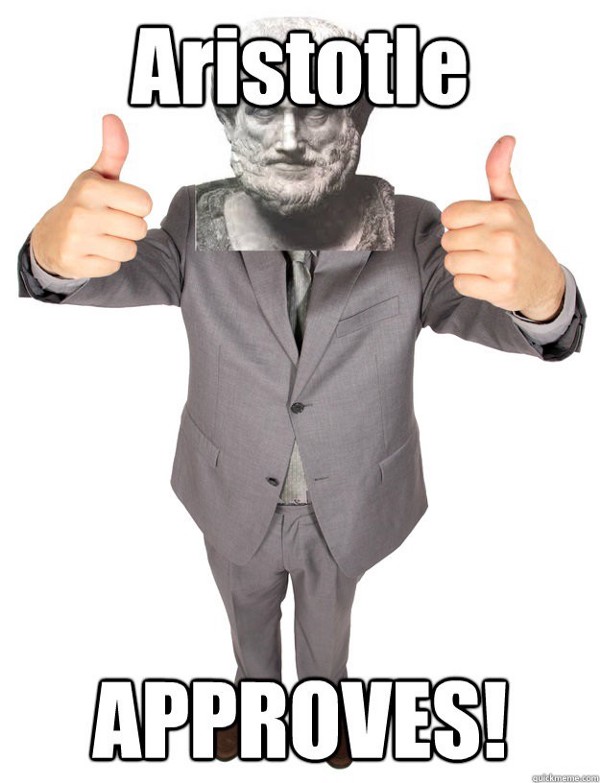
It’s how Aristotle and his old Greek friends rolled when they wiped the floor with their debate opponents in Athens.
Giving builds your ability to influence and thus to sell.
✋ What’s more: humans are wired to repay generosity.
Try sending out a batch of Christmas cards to complete strangers 📬. You’ll be amazed by how many you’ll get back. From people you have never met.
This was an actual social experiment back in 1976.
Philip Kunz and Michael Woolcott send out 578 Christmas cards to complete strangers and got a whopping 117 back.
20% response rate, baby. Marketers would kill for that these days.
If you give people exceptional value regardless of whether they ever pay you a dime, they’ll feel a need to repay you one way or another.
By choosing you over a competitor, for example 😎.

So. No cutting corners, no holding back, no being stingy.
👉 Help, inspire, delight & entertain.
Give. At every step of your prospect’s journey.
Blog posts, podcasts, videos, ebooks, whitepapers, webinars, online courses.
Whatever your audience likes best 👉 go all-in and make it high-quality.
- 🖐️ Giving allows you to connect with customers without pitching. They’ll lower their walls because they’ll know, like and trust you.
- 🖐️ Giving pulls people towards you. No desperate cries for attention needed, just magnetic superpowers.
- 🖐️ Giving will make you a trusted authority in your field.
There are two kinds of people: eaters and bakers. Eaters think the world is a zero-sum game: what someone else eats, they cannot eat. Bakers do not believe that the world is a zero-sum game because they can bake more and bigger pies. Everyone can eat more. People trust bakers and not eaters.
People buy from and refer to people they know, like and trust.
This is a universal truth.
It was true in Dale Carnegie’s time when he wrote the all-time bestseller How To Win Friends and Influence People and it’s true today.
Customers aren’t looking for a sales pitch.
They’re looking for solutions to their problems.
Give it to them and you’ll be their hero 🌟.
High-value content is a low-threshold way of helping your target group while learning where you can make a difference. It’ll help you build a loyal audience that trusts you to solve their problems.
The very best thing you can do as a startup founder is to earn a reputation for helping others.
If you help people advance in whatever they care about, they’ll respect you, they’ll trust you, they’ll engage with you, they’ll want your help, they’ll seek your opinion, they’ll share your content. And they’ll buy from you.
TL;DR
- generosity/altruism/selflessness is your superpower
- give away value for free
- it’s one of the things that sets apart leaders from followers
- giving builds your ability to influence and thus to sell
- people will feel a need to repay you
- people buy from and refer to people they know, like and trust.
- build your klt — factor with content that helps, inspires, delights and entertains
“I already have a product, dumbass” 🙃
You’re probably reading this because you’re looking to get some actionable advice on how to market your startup for maximum growth 📈.
And here I am preaching so-called wisdoms on how you should have played your marketing game long before you ever even had a product.

Sit tight, the actionable stuff is coming.
This quirky little piece of text is the preface to a series of posts that is meant to guide you around the wild jungle of online B2B marketing.
In the next few weeks I will be releasing guides on how to kill it with:
- Internet communities
- Cold email
- … and whatever I still come up with (feel free to pitch in my idea pool)
But this right here, this value-audience fit stuff, is your skeleton key 🗝️.
It’s the One Key To Rule Them All 👊.
All of the guides I’ll be writing, all of the actionable advice will be built on that one guiding principle of building yourself a fanbase by giving value to people that value is of value to.
Channels and platforms like Facebook, LinkedIn, Google, email are just ships you can deploy to get your value to your audience.
And here’s the thing.
⚠️** SPOILER ALERT: HERE’S WHERE IT BECOMES RELEVANT TO YOU**⚠️
If startups can do this stuff from scratch, think about the potential if you already have a base of customers in place.
But a customer base is not an audience yet.
❓ Ask yourself.
What makes you unique? What value are you giving?
What is your field? What makes you a king?
Who are you helping? Who are you giving value to?
Who are you writing content for? Who are you building your product for?
Can’t come up with an answer?
👍 Good.
Now you know why no one is reading your blog posts.
Why only your mom likes your Facebook updates.
Why you’re getting so much hate on your cold emails.
Why your website traffic isn’t going up.
Why none of your trial users starts paying.
👉 Now you know what the problem is.
Stop randomly cold emailing people begging for attention.
Stop putting up a gazillion landing pages to see what sticks.
Stop mindlessly posting on Facebook, LinkedIn, Twitter and Instagram.
Stop throwing money down the Facebook Ads and Google Adwords drain.
Stop looking for magic tricks and quick wins.
✋ Start from scratch.
Find the the area of problems where you can be the king of solutions, then build a kingdom of value on top of it.
Not sure if you’re so unique? 😯
Double-down on your topic until you’re an authority to be reckoned with on something you truly know and care about. Pursue your curiosity and you’ll find the path that’ll make you unique 🌟.
TL;DR
- building a fanbase by giving value is the key to online marketing
- more actionable stuff is coming soon
- in the meantime:
- what makes you unique?
- who are you giving value to?
- stop looking for magic tricks and quick wins
- find where you can be king and build a kingdom of value on top of it
Lean from the best 👑
I didn’t invent this stuff.
I’m just the clown reporting it.
It has been done before and it has been done well.
Some of the most successful startups out there today built their kingdoms on giving out high-value content rather than quick wins and growth hacks.
If you don’t take my word for it, take theirs.
1. Kissmetrics 📊
If you’ve been reading stuff on online marketing and startups, there’s no way you don’t know about Kissmetrics, marketing analytics software.
Founded by content marketing kings 🤴 Hiten Shah and 🤴 Neil Patel Kissmetrics started blogging around 2009. Long before their product was launched.
They did this by identifying their buying personas and creating content that helps them.
Today, about 9 million online marketers, founders, CTOs,… read their posts every month. Their whole business is built on it 🚀.
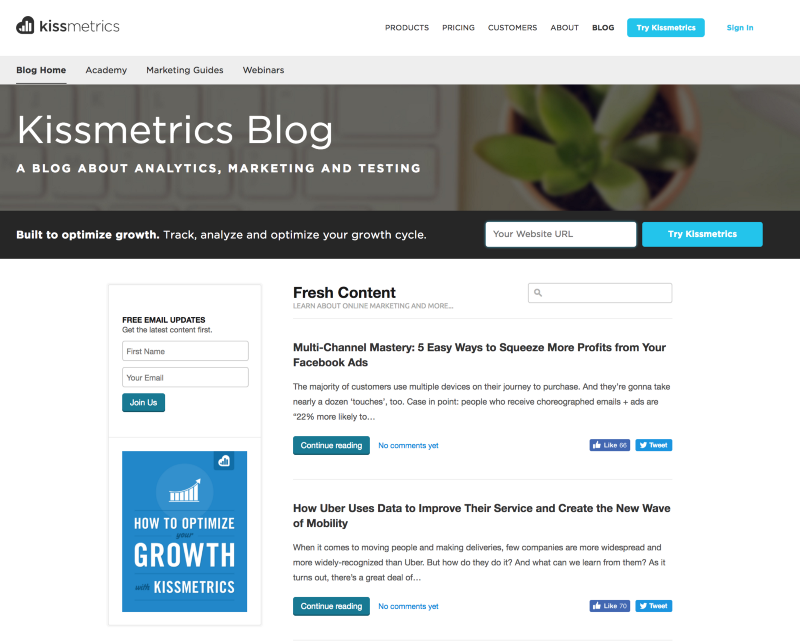
It shows you the unparalleled power of blogging to slow-cook an idea into a readers’ head.
I couldn’t see myself using anything else than Google Analytics. It’s easy, it’s good and it’s free. Why would I change? 🤔
But while making my way through startup marketing, I found myself regularly reading well-written posts over at Kissmetrics’ blog.
Not just stuff like ‘Key Customer Metrics You Need To Be Tracking’, but also How Search Rate Is Killing Your Conversion Rate (And How To Fix It) and Effective SEO For All Stages Of The Conversion Funnel.
These guys are everywhere you look. Their content genuinely helps you grow your business. These guys must know what the hell they’re doing 😯.
So, at some point, I just went overboard.
Today, I’m not only using Kissmetrics, I’m recommending it to other people.
Update: Unfortunately, Kissmetrics was sold and the blog was taken offline. Part of the blog was moved to neilpatel.com, but none of the articles mentioned above are still live.
2. Product Hunt 😼
What cool products are you using?
It’s a question we all ask and it turned out to be one hell of a community builder: Product Hunt.
Product Hunt is the little baby of Ryan Hoover. Ryan is one of those guys who just friggin’ loves everything new and cool ✨.
Not just for fun. For Ryan, new products are an opportunity to learn and, most of all, a way of connecting with like-minded people.

To find out if he could build a community around this topic, Ryan Hoover started out with a curated email newsletter featuring the best new products every day.
Within two weeks, Ryan’s little mailing list had 170 subscribers geeking over new products discovered by 30 hand-picked contributors, among which startup founders, VCs, and prominent bloggers.
Today, Product Hunt is Silicon Valley’s favourite little playground. A tightly-knit community of like-minded geeks who bond over anything hot 🔥 and the new ✨. Tech, but also books, podcasts and games — you name it.
3. Moz 🔍
Here’s what Rand Fishkin, founder of SEO software Moz, has currently pinned on his Twitter wall.
See what I mean? 😎

Like Kissmetrics, Moz was built on the back of a blog.
For the first 18 months, they built an audience with little free tools and downright legendary SEO for beginners guides 📚.
These guides have been around for more than 12 years now. They’re being continuously updated and are still pulling in new customers every day.
By the time they started their subscriptions in 2007, Moz had an audience of about 10k marketers they used to fine-tune and grow their value.
By 2008–2009, Moz was pulling in subscribers from far beyond their own community. Today it is one of the leaders in SEO software.
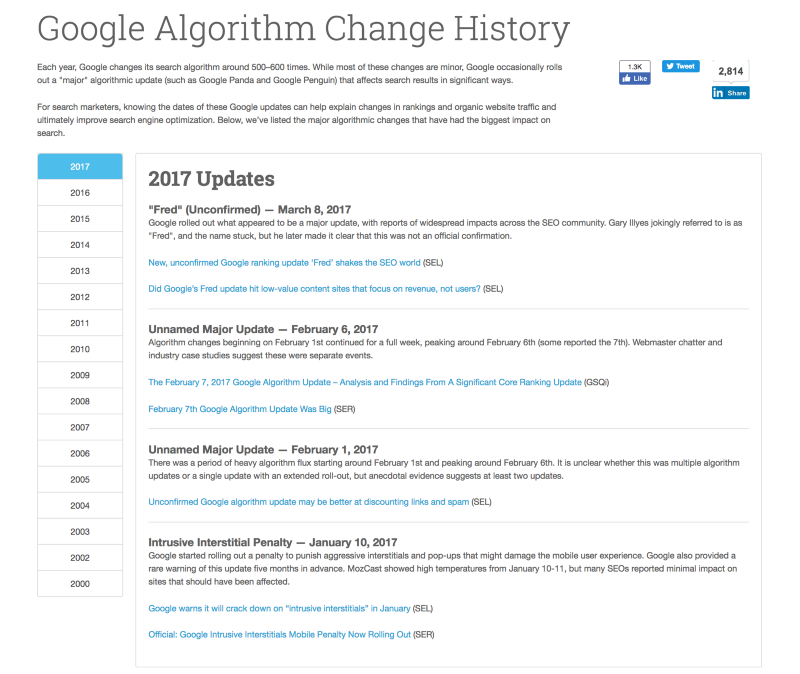
Moz is also known for staying right on top of its industry with thorough research. They’re famous for annually documenting changes in Google’s algorithm and teaching on how to go about those changes. It’s a unique resource that gives them invaluable thought leadership 💭.
Without that “marketing first” approach, I’m skeptical if we ever could have gotten a product off the ground.
💬 Rand Fishkin — Founder of Moz
Rand pursued his beliefs in community-building as marketing again when he teamed up with HubSpot to create Inbound.org, a community for online marketers.
4. HubSpot 🎯
HubSpot is a marketing empire built on value of all sorts.
Among other things, these guys are champions when it comes to side-project marketing. They build little free tools that bring big value to a lot of people.
The most famous example is WebsiteGrader, a tool that tells you how well your website is doing for for key metrics like performance, mobile readiness, SEO and security. For free.
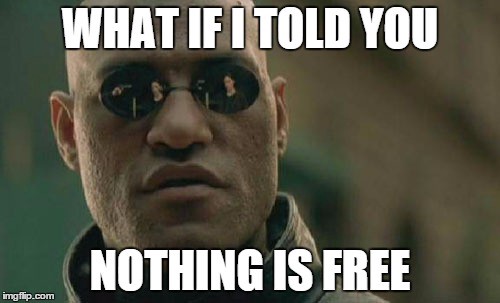
It goes without saying HubSpot’s software offers you the solutions to pain points that may emerge from WebsiteGrader. They’ll make sure you know about that with drip email campaigns 💦 and quality content 📚.
HubSpot is big on content. They have a whole library of free ebooks on inbound marketing topics. They complement those with checklists 📋 and templates 📝 to get their audience to really act on those guides and push them further down the sales funnel.
The Next Big Thing… 💯
Now that you’re all hot and ready to get cracking on that audience…🔥
I’ll have you wait for a week to show you how to go about that 😛.
💬 We’ll talk about:
- how to find a field where you be of value in 🤴
- how to find your audience where you can be of value to 👨👩👧👦
- how to make sure the things fit together like they were meant for each other, forever and ever 💏
Make sure to subscribe so you don’t miss anything 😏.

We hope you liked this post.
If you did, hit ❤ to spread the word!
For more hot stuff on startups, growth marketing and sales
👉 subscribe here
👉 follow @salesflare on Twitter
Last updated:
- The 20 Best Sales Books Elon Musk Is Probably Reading - February 14, 2023
- 6 foolproof ways to get your startup its first 100 customers - December 6, 2022
- How To Build A Sales Funnel That Sells - September 2, 2021